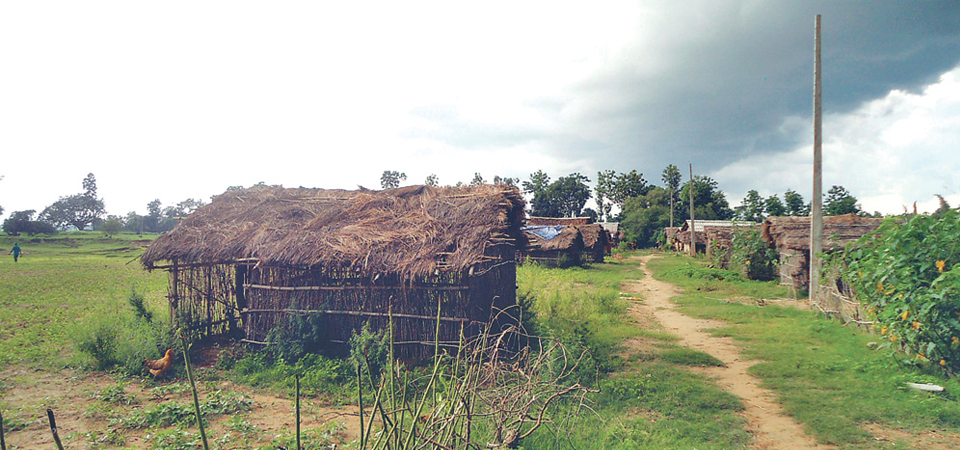Two decades on, 1,082 families of freed Kamaiyas still await resettlement

By Abinash Chaudhary
Dhangadhi, Dec. 23: Even two decades after the abolition of the Kamaiya (bonded labour) system in Nepal, around 1,082 families of freed Kamaiyas in Sudurpaschim Province are still waiting for their rehabilitation. As per the data provided by the Freed Kamaiya Women's Development Forum, there are an estimated 1,082 freed Kamaiyas in the province, 953 in Kailali and 129 in Kanchanpur districts, who are yet to be rehabilitated.
So far, 9,772 freed Kamaiyas of Kailali have received their identity cards. Of them 8,975 should have received land, but only 8,022 have done so. Similarly, 129 families of freed Kamaiyas are yet to be resettled in Kanchanpur district.
In Kanchanpur, a total of 4,506 people have received their identity cards. Of them 4,418 should have received the land. But only 4,289 freed Kamaiyas have done so to date.
The Kamaiya system of slavery or bonded labour was practiced legally in Nepal until 2000. The then government of Nepal freed the Kamaiyas from bonded labour on July 17, 2000. Over 30,000 Kamaiyas had been freed after the liberation.
Following the declaration, many were kicked out of their homes by their landlords without any alternative source of livelihood. To address the problem, the government announced a rehabilitation programme for freed Kamaiyas and also pledged to make Kamaiyas self-reliant.
However, implementation has remained patchy. Even two decades after the emancipation, rehabilitation of many freed Kamaiyas has not been completed yet.
Many Kamaiyas are still forced to live in temporary huts in forests, near river banks and unregistered or public lands. In addition to lacking rehabilitation, the freed Kamaiyas also do not have jobs. Because of which they are struggling to make their ends meet.
Kaushila Chaudhary, chairperson of the Freed Kamaiya Women's Development Forum Kailali, has said that the entire problem of rehabilitation still lingers on because the past state mechanism remained ignorant toward the issue, while the new government structure lacks the resources to make huge leaps.
Though the rehabilitation work of the remaining freed Kamaiyas were expected to be completed after the formation of a three-tier government, the local authority had failed to ensure implementation of the rehabilitation programme, she said.
"The government has started forgetting the issue of freed Kamaiyas, without completing the work of rehabilitation,” she added.
Recent News

Do not make expressions casting dout on election: EC
14 Apr, 2022
CM Bhatta says may New Year 2079 BS inspire positive thinking
14 Apr, 2022
Three new cases, 44 recoveries in 24 hours
14 Apr, 2022
689 climbers of 84 teams so far acquire permits for climbing various peaks this spring season
14 Apr, 2022
How the rising cost of living crisis is impacting Nepal
14 Apr, 2022
US military confirms an interstellar meteor collided with Earth
14 Apr, 2022
Valneva Covid vaccine approved for use in UK
14 Apr, 2022
Chair Prachanda highlights need of unity among Maoist, Communist forces
14 Apr, 2022
Ranbir Kapoor and Alia Bhatt: Bollywood toasts star couple on wedding
14 Apr, 2022
President Bhandari confers decorations (Photo Feature)
14 Apr, 2022











